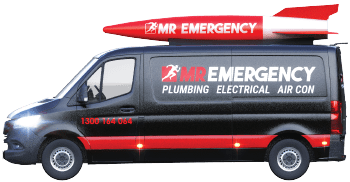Carbon Monoxide Detector Services
At Mr Emergency, we offer carbon monoxide (CO) testing for our customers. The nature of carbon monoxide makes it difficult to detect. It has no smell and can’t be seen in the air. Carbon monoxide forms when fuel burns inside an appliance. It is important to understand the dangers and how it could affect you.
In the past decade, thousands of Australians have been admitted to hospital for carbon monoxide poisoning. The symptoms of which are very similar to the flu and are hard to diagnose. It can rapidly cause vital harm to your organs by starving them of oxygen.
If you are concerned, seek medical help immediately. Carbon monoxide leaks can be extremely dangerous. Luckily, there are measures you can take to prevent carbon monoxide from building up.
At Mr Emergency, we recommend you service your gas appliances regularly.
- It is important to service your appliances every two years
- Be sure to book a carbon monoxide test soon
- Check your ventilation systems regularly because a break in the vent could lead to a buildup of carbon monoxide
A carbon monoxide test will identify any faulty gas appliances that could lead to a build-up of the gas. If you have never had your home tested for carbon monoxide, we highly recommend doing so.
At Mr Emergency, our plumbers are fully qualified as gas fitters. They complete ongoing training to stay up to date with the latest carbon monoxide testing advances. If you’ve got CO spillage inside your home, we’ll find it. Our plumbers operate 24/7 and can even be at your door within 30 minutes*.
What is Carbon Monoxide?
Carbon monoxide is a gas that consists of one part carbon and one part oxygen – not to be confused with carbon dioxide which combines one part carbon with two parts oxygen.
It is a by-product of the burning process in appliances such as gas space heaters and hot water systems, as well as outdoor fires. Carbon monoxide is a colourless, odourless and potentially lethal gas; one that is often referred to as a “silent killer” if it gets into the body in significant amounts.
The likelihood of experiencing the negative effects of carbon monoxide spillage will typically depend on the environment you’re in. For example, in an outdoor situation like a controlled campfire, you will have plenty of oxygen in the outdoor air to balance out the carbon particles.
This will significantly reduce the risk of carbon monoxide poisoning. But when you’re in an enclosed space, one with insufficient ventilation for your open-flued gas appliance, that balance becomes disrupted and your body may begin to experience the side effects.
As long as your heater is properly flued, and you have adequate ventilation and fittings near any gas-powered appliance, you won’t normally have to worry about carbon monoxide poisoning and CO spillage. But it is necessary to get your cooking, hot water and heating systems checked regularly.
What are the Signs of Carbon Monoxide Poisoning?
Early indicators of CO poisoning are often mistaken for flu-like symptoms. These may include persistent headaches, dizziness, nausea and confusion.
As exposure worsens, victims might experience difficulty breathing, chest pain, and an accelerated heartbeat. Severe cases can lead to loss of consciousness and even death.
Diagnosing carbon monoxide poisoning is the job of medical professionals. Those with suspected carbon monoxide poisoning should always seek medical help.
One of the reasons carbon monoxide spillage is so dangerous is its ability to go unnoticed until it’s too late. Regularly checking for common signs can help you identify a potential problem.
If several members of a household exhibit similar symptoms that improve when they leave the premises, carbon monoxide poisoning should be suspected.
Testing for carbon monoxide gas plays a pivotal role in early detection. Installing CO detectors in key areas of your home, such as bedrooms and hallways, can provide timely warnings in case of a gas leak.
Additionally, conducting annual inspections of fuel-burning appliances by certified professionals ensures your safety and peace of mind. Regular gas appliance servicing is highly recommended.
Understanding how much carbon monoxide leakage is acceptable and the signs of carbon monoxide poisoning is essential for maintaining a secure living environment. By staying vigilant and investing in proper testing methods, you can protect yourself and your loved ones from the dangers of CO poisoning.
What's Involved in CO Testing?
Carbon monoxide testing is a vital safety measure that helps prevent the dangers of exposure to this invisible, odourless gas. The process of carbon monoxide testing is straightforward and essential for ensuring the well-being of your household.
During a carbon monoxide test, specialised detection equipment is used to measure the levels of carbon monoxide in the air.
These detectors are strategically placed in areas where fuel-burning appliances are present, such as kitchens, living rooms, and bedrooms, to read CO levels. They continuously monitor the air for any elevated levels of carbon monoxide gas.
Professionals recommend regular testing to identify potential leaks from malfunctioning appliances, such as central heating units.
Annual inspections and maintenance of appliances, such as furnaces, water heaters, and stoves, are also recommended to ensure their proper functioning and minimise the risk of carbon monoxide emissions.
Carbon monoxide testing not only helps prevent health hazards but also offers peace of mind. If the detectors detect elevated levels of carbon monoxide, they emit alarms to alert you and your family, giving you time to evacuate and seek assistance.
Carbon monoxide testing involves the use of specialised detectors to monitor and measure carbon monoxide levels, including the CO background level, in the air. Buying your own CO detector is also recommended.
By implementing regular testing and maintenance, you can create a safer living environment and protect your loved ones from the harmful effects of CO spillage.
Appliances That Need to Be Tested
Carbon monoxide testing is essential to safeguard your home from this silent threat. It’s crucial to test appliances that have the potential to emit carbon monoxide, ensuring the safety of your household.
Common fuel-burning appliances like furnaces, water heaters, stoves, and fireplaces should be tested regularly. These open flued gas appliances can develop malfunctions or blockages that lead to the production of carbon monoxide gas.
Heating systems, both gas and oil-powered, require special attention. Additionally, any backup generators or vehicles idling in attached garages can be sources of carbon monoxide emissions. Combustion products such as this should always be vented.
During testing procedures, check your operating exhaust fans to see that they are doing their job. Additional ventilation may be necessary if you find it is not adequate.
Regular maintenance and inspection of these appliances by professionals can help identify and address issues before they become hazardous.
By having Mr Emergency test these types of appliances, you take a proactive step toward minimising the risk of carbon monoxide exposure from CO spillage, ensuring a secure living environment for you and your loved ones.
Beware of a Negative Pressure Environment in the Home
According to Energy Safe Victoria, a negative pressure environment can occur when there isn’t enough ventilation in the home while exhaust fans are operating.
It has the effect of drawing air from any external opening in the house, including gas appliance openings and chimneys, the Energy Safe Victoria site says.
This creates a problem with the operation of open flue gas appliances because it means that dangerous gasses, such as CO, can be drawn into living spaces via the gas appliance flue or chimney.
If this negative pressure environment exists, it can become a major problem. It can be avoided by getting gas appliances checked once every two years, not leaving gas heaters on overnight and ensuring you have adequate ventilation. If you’re in need of additional permanent ventilation, don’t hesitate to call Mr Emergency.
Why Call Mr Emergency for Carbon Monoxide Testing?
Here at Mr Emergency, customer satisfaction is our top priority. When you call the experts at Mr Emergency, you have the benefits of:
- Fully qualified and licensed gas fitters who take regular refresher courses
- Available 24/7, every day of the year
- One-year warranty on all workmanship, parts and materials
- Comprehensive public liability insurance
- Always arrive on time
- Upfront fixed-price quotes
- Finance options** for approved customers
- Certificates of compliance issued in line with government standards and regulations
At Mr Emergency, we also provide a full range of electrical and air conditioning services to homes and businesses across the country, alongside our gas fitting services.
Finance Options** for CO Testing
Here at Mr Emergency, we understand that carbon monoxide testing has to be done and that you don’t always have the funds available to pay for the work immediately.
That’s why we offer eligible customers a range of flexible finance options**.
Simply choose a payment plan with one of our providers, Zip or Humm. You get the flexibility of weekly, fortnightly or monthly instalments, depending on your choice of provider. Some plans even accept a $0 deposit, so there’s no upfront cost.
Your on-site technician can take you through the easy application process and approval usually takes only a few minutes. Then Mr Emergency can perform carbon monoxide testing on your appliances.
We also accept payment by cash, cheque, direct bank transfer and credit card (Visa, Mastercard or American Express). Contact us today for carbon monoxide detection services.















